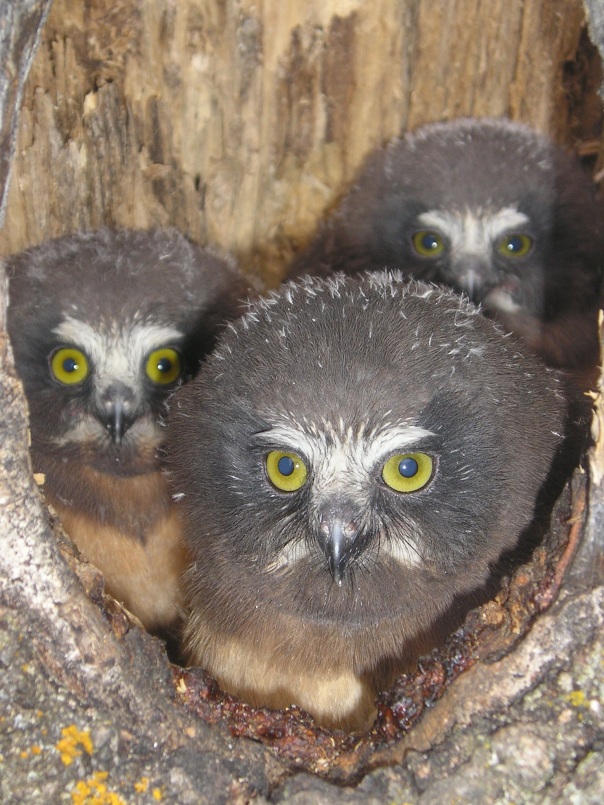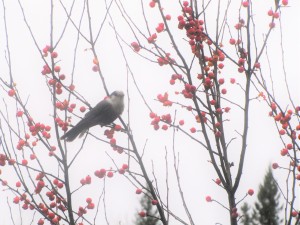
I always stop to listen to the night sounds when I take the dogs out at night. I could just let them out the door and go back to my warm bed for the few moments they stay out, but with the wolves lurking almost nightly around our house, I don’t dare. So I go out and listen. I have recently heard our resident barred owl hooting down in the black spruce. I will have to go check our barred owl nesting box to see if she has set up residence in it. But have to wait til there is a decent crust on the snow to hold me up as the spongy moss under snow makes walking awkward.
But the owls I really love to hear are the tiny little Northern Saw-whets and Boreal owls. Some describe the call of the Saw-whet as that of a saw being sharpened but to make a more modern description, I think they sound like heavy equipment back up bells. The doot doot doot that goes on and on can stick in ones head like a music worm. When I participated in owl surveys, I would get home in the wee hours to try to catch some sleep. But the repetitive sound of the little owls would stick in my head and keep me awake.
The call of the Boreal is also very unique for an owl call. Truth be told, many folks mistake it for the winnowing call of the Common Snipe that fill the spring air. If the call comes from on high, it is a snipe, if it comes from the same location each time in the trees, it is an owl. Also, the little Boreals are already staking out their territory in the dead of winter. While staying out at my mom’s camp last week, I would wake up to the call of a Boreal in the big poplars behind her house. Boreals and Saw-whets both use the cavities made by pileated woodpeckers as nesting cavities. This allows them to start nesting early and helps them avoid the corvids and jays that take great pleasure, it seems, in tormenting them.
So even though I have to leave my warm bed to ensure the safety of my dogs, the cold is tolerable once I hear my little owl harbingers, braving the winter and singing their song of love. Spring can’t be far off.


